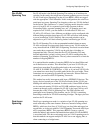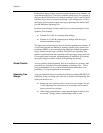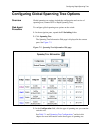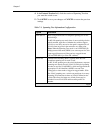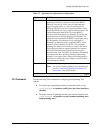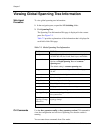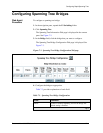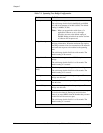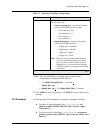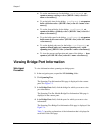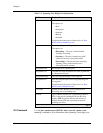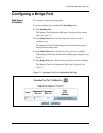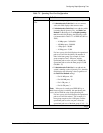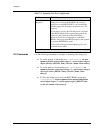
Document No. 10-300077, Issue 2 7-13
Configuring Rapid Spanning Tree
* Note: The Avaya Multiservice switches enforce the following
relationships, as defined by IEEE 802.1D:
— 2 × (Bridge Forward Delay – 1 second) >
Bridge Max Age
— Bridge Max Age > 2 × (Bridge Hello Time + 1 second)
5. Click APPLY to save your changes or CANCEL to restore the previous
settings.
CLI Command Use the following CLI commands to configure a spanning tree bridge:
■ To enable or disable Spanning Tree, (configure)# set
spantree {enable | disable} {802.1D | vlan {<vlan-id> | name
<vlan-name>}}
■ To set the priority of the bridge, (configure)# set spantree
priority <priority-value> {802.1D | vlan {<vlan-id> | name <vlan-
name>}}
Path Cost Default The type of default path costs that ports in this bridge
will use. Options are:
• common-spanning-tree—uses the 16-bit default
path costs from IEEE Std. 802.1D-1998:
— For 10 MB ports, 100
— For 100 MB ports, 19
— For 1 GB ports, 4
— For 10 GB ports, 3
• Rapid-spanning-tree—uses the 32-bit default
path costs from IEEE Std. 802.1t:
— 10 Mbps port—2,000,000
— 100 Mbps port—200,000
— 1 Gbps port—20,000
— 10 Gbps port—2,500
Note: The switch must be running Rapid Spanning
Tree to use the Rapid Spanning Tree default
path costs. If the switch is running common
Spanning Tree, it uses the common Spanning
Tree default path costs regardless of the setting
of this field.
Table 7-3. Spanning Tree Bridge Configuration
Field Definition
3 of 3



